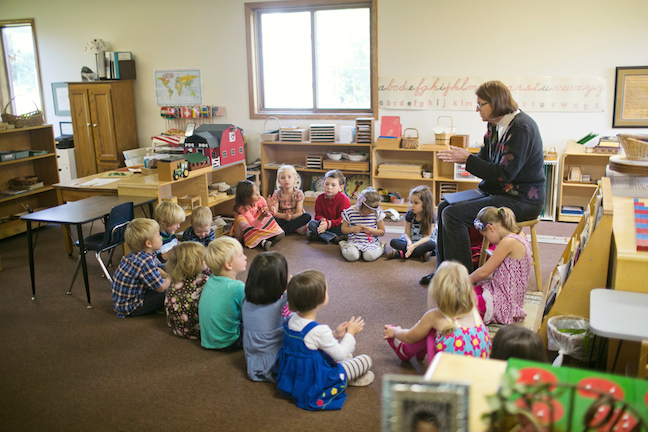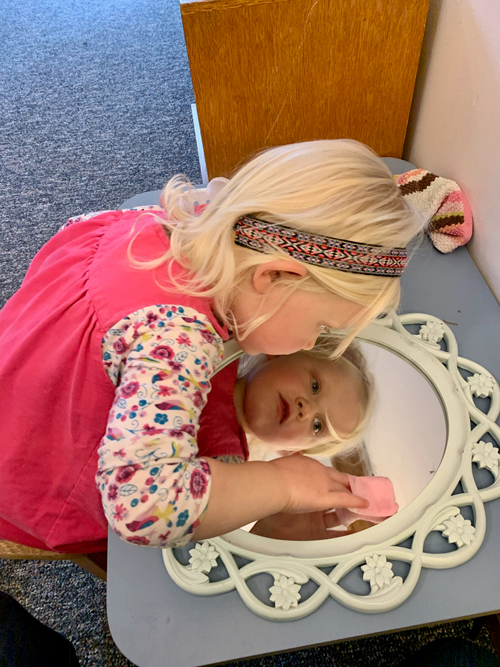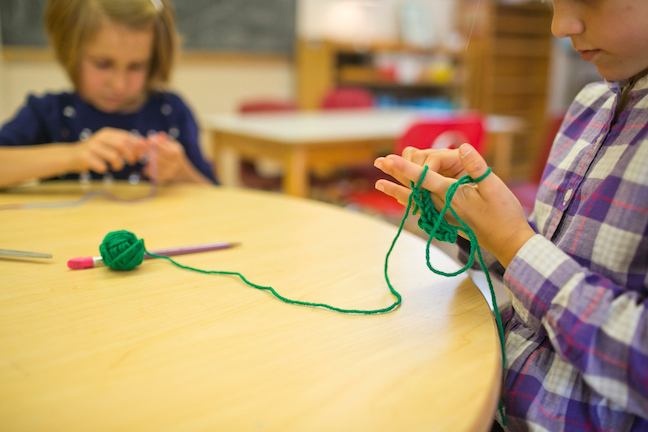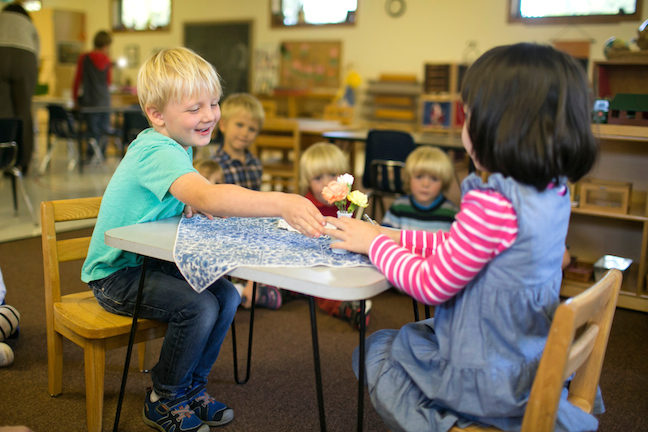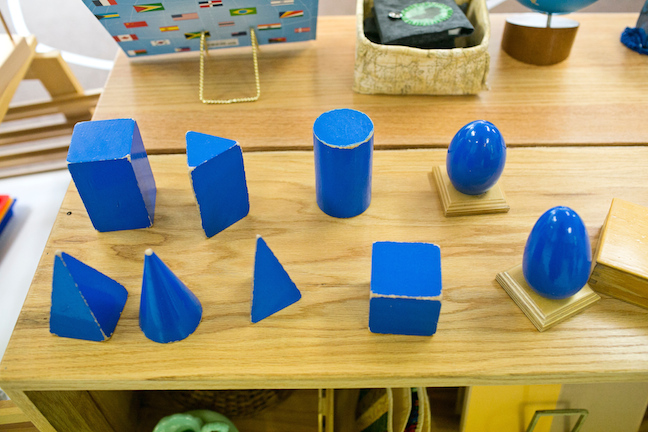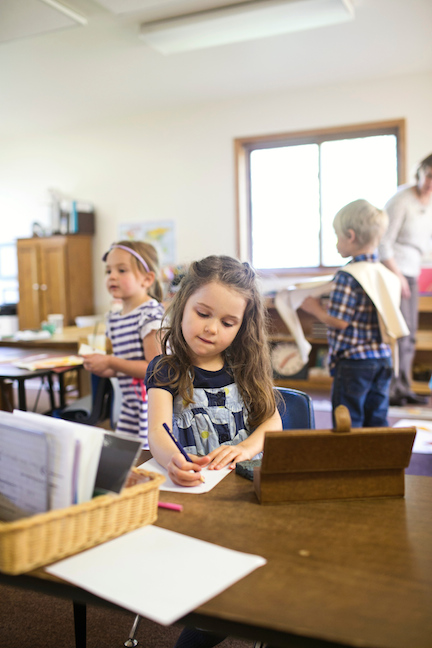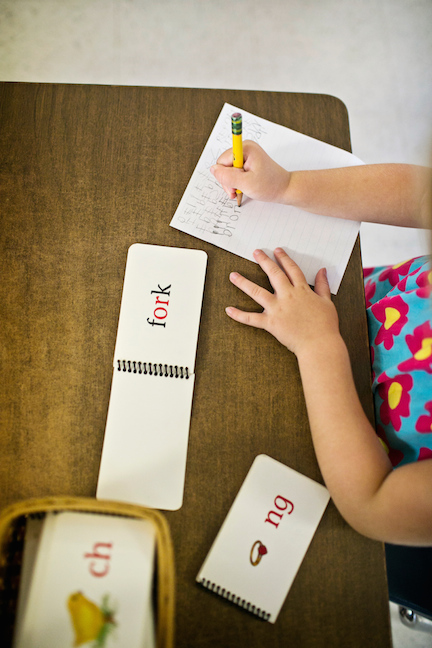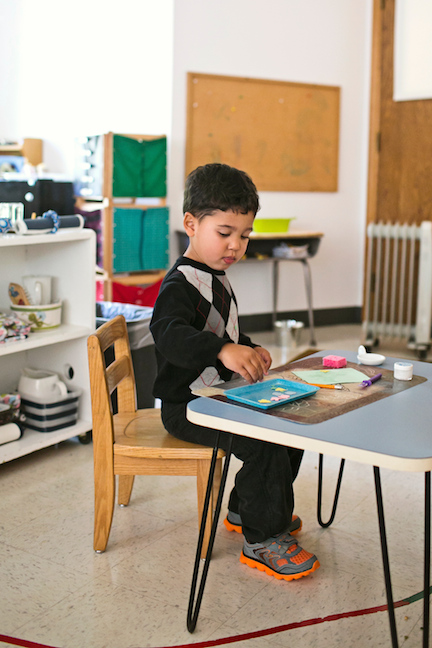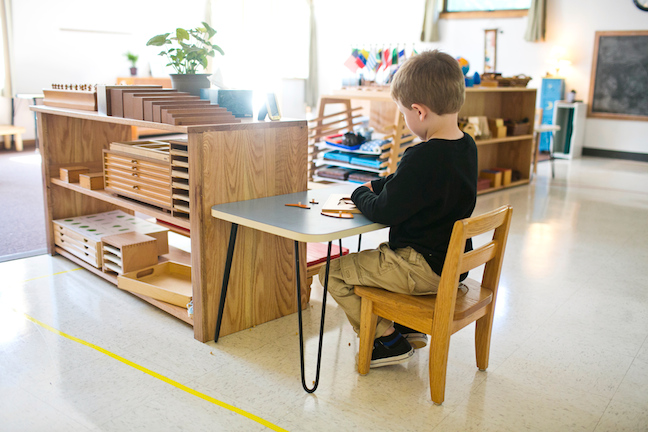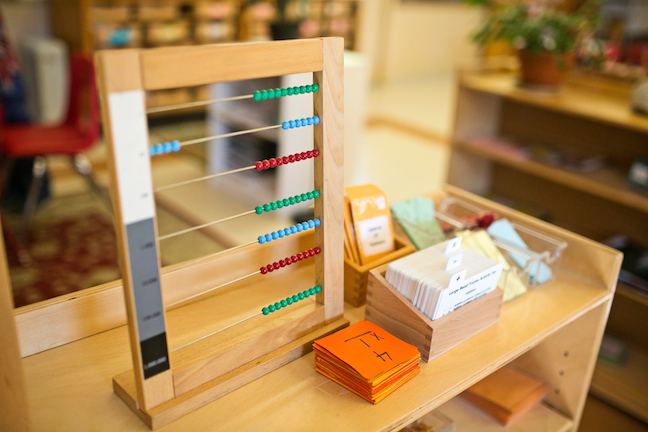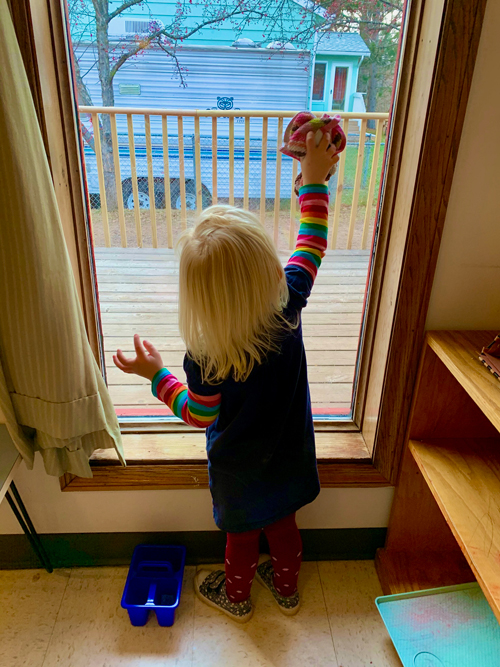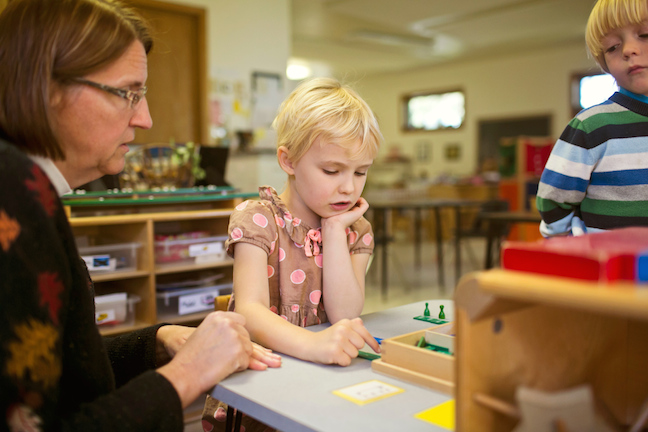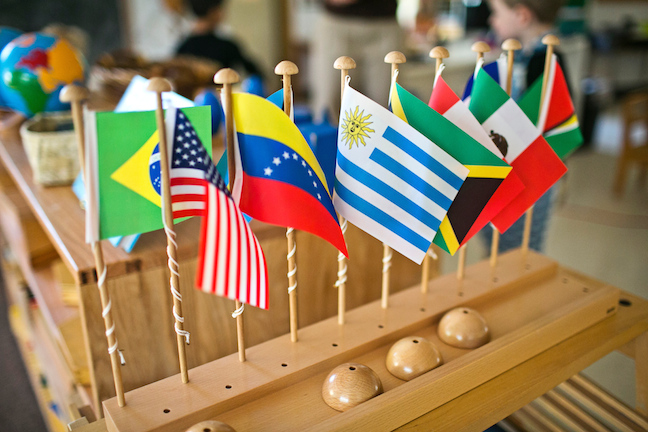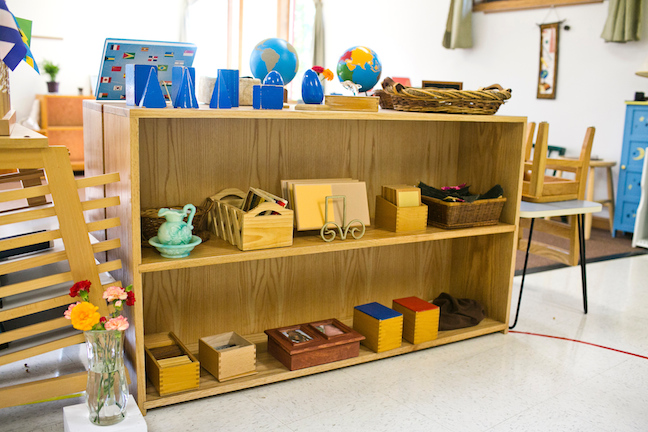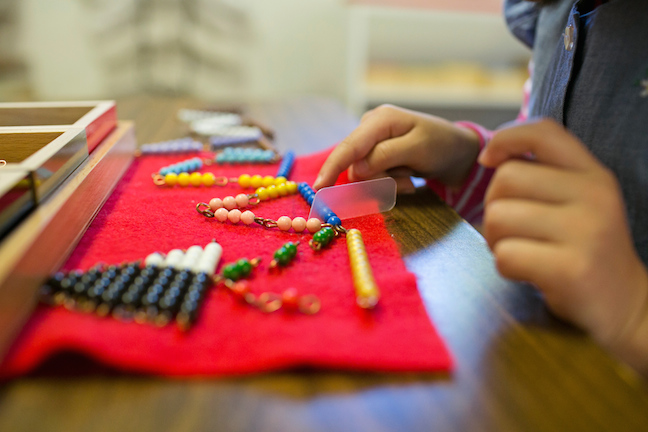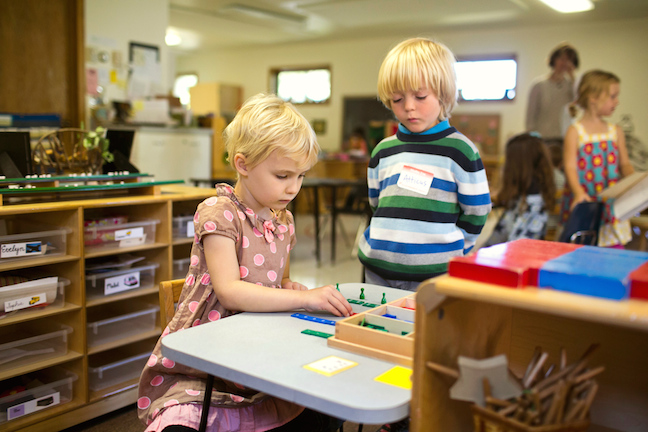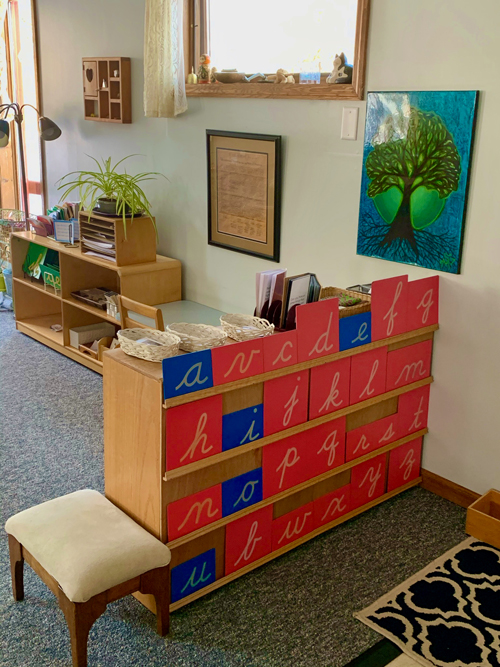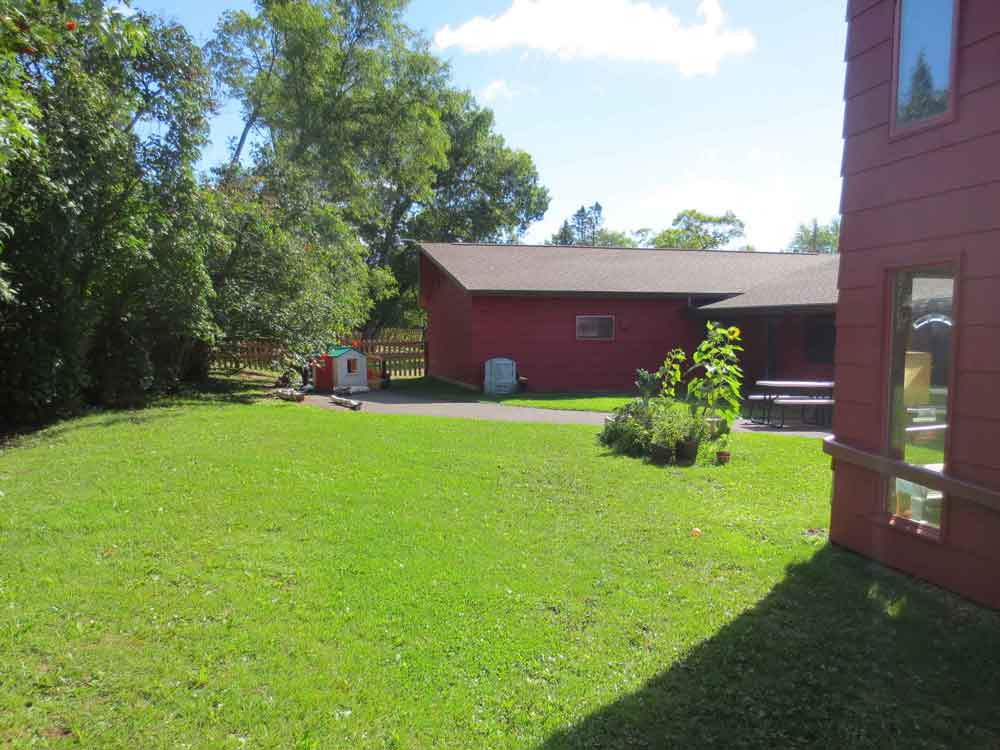Learning at MSD
Children’s House
33 months – 6 years
(Preschool & Kindergarten)
Since 1981, we’ve guided each of our students to become a happy, self-motivated learner with a positive self-image and global perspective. At Montessori School of Duluth, children learn valuable educational, social, and life skills. At the same time, children’s innate need for order, learning through their senses, and working at their own pace are fostered. Unlike traditional models of education where children are expected to adapt and change to fit the system, Montessori education changes to fit the child. In this way, we aid children in their discovery of our world, and guide them toward being passionate, lifelong learners.
Experience our Montessori classrooms in person! Schedule your tour online, call 218.728.4600, or email info@montessoriduluthmn.org to schedule a tour and classroom observation.
Mixed Age Classroom
At MSD, children of the same developmental stage (ages 3-6) share one classroom. Montessori education understands that learning is social as well as intellectual. The Montessori multi-age classroom models the real world, and affords opportunities for children to interact with each other in a constructive way, mastering social and leadership skills to thrive in a diverse world. Mixed-age classrooms allow the older children to become mentors to the younger ones, and thereby be inspired to reach their own potential.
Curriculum
Dr. Maria Montessori believed young children to be particularly sensitive to learning from their environment. She referred to this experience as “work”. The classroom teacher guides the children by presenting carefully designed materials and then allowing them to work at their own pace. The following areas of work are presented in the Children’s House:
Practical Life – Hands-on everyday activities like polishing, washing, and scrubbing that help children develop the ability to concentrate.
Sensorial – Materials that allow children to explore the qualities of our physical world through shapes, colors, textures, sounds, tastes, and so on.
Language – Language is everywhere in the Children’s House classroom. With the guidance of their teacher, children progress individually based on their own interests, from oral language to symbolic language. Writing happens first and then reading.
Mathematics – Using a hands-on approach, children are given a concrete impression of numbers and quantities through materials that represent the decimal system. Counting happens first, then simple to complex operations as the child’s interest allows.
Second Language – MSD’s second language offering varies by classroom, such as Spanish, French, or American Sign Language (ASL).
Why 5 days a week?
We strive to create an environment where order, consistency, and independence is valued. Children at this developmental stage do not have the understanding of time and benefit from a consistent schedule. When there are gaps in attendance the children may become confused by the routine, lose enthusiasm for work, and do not achieve the repetition required for mastery of skills.
Schedule of the Day
7:30 – 8:15 AM Before-care: free play
8:15 – 8:20 AM Transition from Before-care to classrooms
8:20 – 11:00 AM Morning work cycle, including independent work, presentations from teachers, group work, snack, and ending with large group time.
11:00 – 11:30 AM Recess
11:15 AM Dismissal for morning-only children; transition to lunch for others
11:30 AM Lunch
12:20 PM Children who nap transition to Rest/Nap Room
12:30 PM Remaining children transition to silent read-aloud (rest time)
1:00 PM Recess
1:30 PM Afternoon work cycle
Children not falling asleep in Nap Room return to classrooms following 30 minutes of rest
3:15 PM Children prepare for either dismissal or After-care
3:30 PM Dismissal, transition to snack for those in After-care
3:45 PM Children transition to play outdoors, weather permitting
5:30 PM School closes

